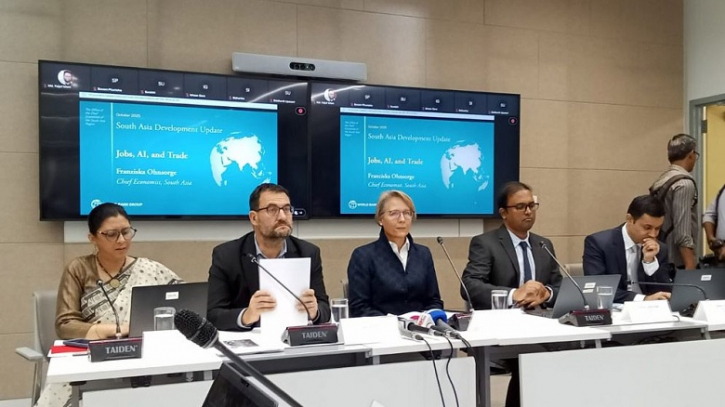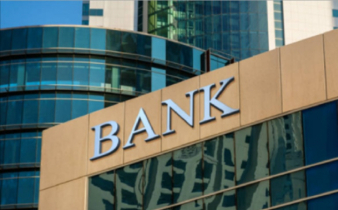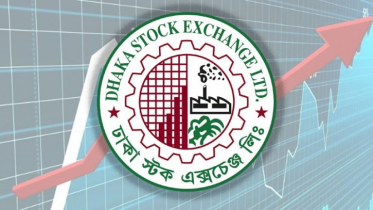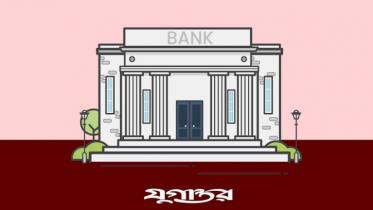Bangladesh’s GDP growth to reach 4.8 percent in the current fiscal year

Published : 20:34, 7 October 2025
The current fiscal year's GDP (gross domestic product) growth may be 4.8 percent. There will be some improvement in this regard compared to the last fiscal year as private consumption increases due to the reduction in inflationary pressure. However, growth may increase to 6.7 percent in the next fiscal year 2026-27.
The World Bank has made such a forecast in the Bangladesh Development Update report. The report was released at a press conference held at the organization's own office in Agargaon in the capital on Tuesday (October 7). Another report titled Asia Development Update was released at the same time.
World Bank Divisional Director Jane Pesme spoke at the time. The Asian Development Update report was presented by Franziska Leslot Ohsze, Chief Economist of the World Bank Dhaka Office, and the Bangladesh Development Update report was presented by the organization's Economist Najsus Shakib Khan. Senior External Officer Mehreen A Mahbub delivered the speech.
The report said that investment is expected to improve in the current fiscal year compared to the previous fiscal year. However, political uncertainty and ongoing weakness in the banking sector may slow down the pace of fulfilling this expectation.
The current account balance is likely to return to a slight deficit as imports normalize. In addition, the fiscal deficit is expected to remain below 5 percent of GDP due to revenue growth due to improving economic activities.
The report also said that inflation continued to trend downward in recent months but increased to 8.3 percent in August 2025. In addition, food inflation has declined significantly from 13.8 percent in November 2024 to 7.6 percent in August 2025.
Meanwhile, exchange rate stability and restoration of food supply have helped control inflation. The wage growth rate of the low-income population continues to outpace inflation; However, the gap has narrowed in recent months.
The report said that poverty rates have increased and the previous situation has deteriorated. The national poverty rate is estimated to have increased to 21.2 percent in fiscal year 2025, from 20.5 percent in fiscal year 2024.
It also said that the labor force participation rate fell from 60.9 percent to 58.9 percent between 2023 and 2024, mainly due to a decline in female participation. Another 3 million working-age people were outside the labor force, of which 2.4 million were women. Total employment fell by about 2 million to 69.1 million during this period, resulting in a decline in the employment-to-working-age population ratio by 2.1 percentage points to 56.7 percent.
The report said that the financial sector remains weak. The main challenge in the banking sector is non-performing loans. In addition,
The capital-risk-weighted assets ratio has come down to 6.3 percent, well below the minimum of 10 percent. The government has taken various initiatives. There is an initiative to merge weak banks. Efforts are underway to strengthen the legal framework for the corporate governance of banks, along with the governance and management independence of the central bank. In addition, preparations are underway to improve the deposit protection system and introduce a strong emergency liquidity assistance framework.
The report also said that GDP growth is estimated to decline slightly to 4.0 percent in fiscal year 2025, from 4.2 percent in fiscal year 2024. The slowdown in growth has occurred due to weak investment, which has increased by only 0.8 percent. Private investment was low due to political uncertainty and the high cost of doing business. Government investment has also decreased. Implementation of the ADP has slowed down.
It has been suggested to increase revenue. In this regard, it is said that Bangladesh's tax-GDP ratio is lower than that of many countries in South Asia, which is one of the obstacles to sustainable development.

.png)
.png)






